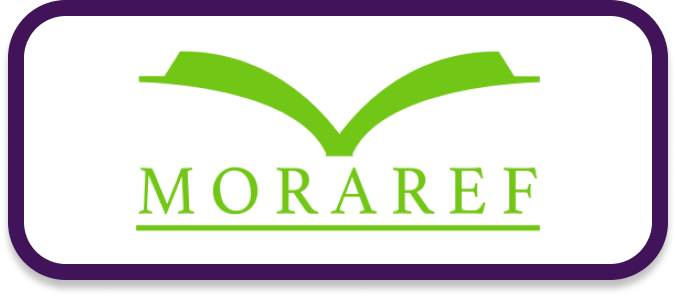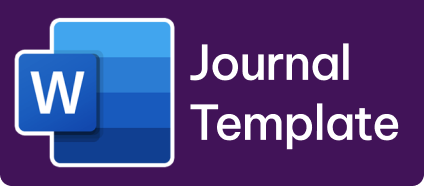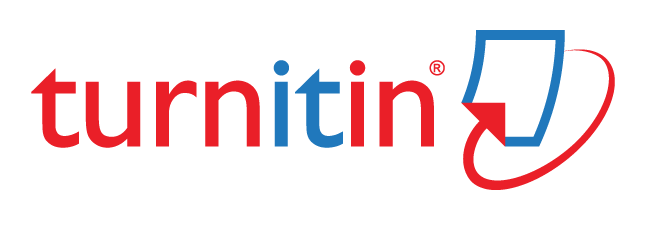ENGLISH SENIOR HIGH SCHOOL TEXTBOOK ANALYSIS: ADDRESSING GENDER BIAS ISSUES
Abstract
Keywords
Full Text:
PDFReferences
Amini, M., & Birjandi, P. (2012). Gender Bias in the Iranian High School EFL Textbooks. English Language Teaching, 5(2). doi:10.5539/elt.v5n2p134.
Arikunto, Suharsimi. (1996). Prosedur Penelitian. Jakarta: Rineka Citra
Ary, Donald, Lucy C. Jacobs, and Christine K. Sorensen. (2010). Introduction to Research in Education: 8th edition. Wadsworth: Cengange Learning,
Baiqiang, Tao. (July 15, 2008). Identifying and Combating Sexism in EFL Textbooks.
Baleghizadeh, Sasan and Amir H. R. (2011). Evaluation of an ESP Textbook for the Students of Sociology. Journal of Language Teaching and Research, 2(5)
Baron, Robert A., Nyla R.B., and Donn Byme, (2008). Social Psychology: twelfth edition. Boston: Pearson Education
Chen, P. (2008). English Teacher should Notice Gender Bias in Textbook. The Science Education Article Collects, 28. 128-130
Coles, G. (1977). Dick and Jane Grow up: Ideology in Adult Basic Education Readers. Urban Education, 12(1), 37-53. http://dx.doi.org/10.1177/0042085977121003
Crawford, Mary and Rhoda Unger. (2004). Women and Gender: A Feminist Psychology. New York: McGraw-Hill
Eckert, P., & McConnell-Ginet, S. (2003). Language and Gender. Cambridge: Cambridge University Press
Evans, L., & Davies, K. (2000). No sissy boys here: A Content Analysis of the Representation of Masculinity in Elementary School Reading Textbooks. Sex Roles, 42(3), 255-270. http://dx.doi.org/10.1023/A:1007043323906
Fakir, Muhammad Razia. (2007). Effective Use of Textbooks: A Neglected Aspect of Education in Indonesia. Journal of Education for Indonesia Development 3(1)
Gharbavi, A., & Mousavi, S. (n.d.). A Content Analysis of Textbook: Investigating Gender Bias as a Social Prominence in Iranian High School English Textbooks. English Linguistic Research, 1(1). doi:dx.doi.org/10.5430/elr.v1m1p42
Harmer, Jeremy. (1991). The Practice of English Language teaching: new edition. New York: Longman
Hutchinson, T. and Torres, E. (1994), “The textbook as agent of change”, ELT Journal 48(4): 315-28
Ifegbesan, A. (n.d.). Gender-Styereotypes Belief and Practises in the Classroom: The Nigerian Post-Primary School Teachers'. Global Journal of Human Social Science. 10(4).
Lips, Hilarly M. (2003). A new Psychology of Women: Gender, Culture, and Ethnicity: second edition. New York: McGraw Hill.
Mardalis. (1995). Metode Penelitian. Jakarta: Bumi Aksara
McGrath, I. (2002), Materials Evaluation and Design for Language Teaching, Edinburgh: Edinburgh University Press
Mineshima, M. (2008). Gender Representation in an EFL Textbook. [Online]Available:http://www.niit.ac.jp/lib/contents/kiyo/genko/13/14_MINESHIMA.pdf
Mukundan, Jayakaran, and Vahid, Nimechisalem. (2008). Gender Representation in Malaysian Secondary School Englsih Language Textbook. Indonesian Journals of English Language Teaching. 4(2)
Muthali’in, Ahmad. (2001). Bias Gender dalam Pendidikan. Surakarta: Muhammadiyah University Press
Nunan, David. (1991). Language Teaching Methodology: A Textbook for Teacher. London: Prentice Hall
Porreca, K. L. 1984. Sexism in Current ESL Textbooks. TESOL Quarterly, 18(4), 704-724.
Reed, Arthea J.S., Verna E.R., Mary W.o. (1998). In the Classroom; An Introduction to Education: third edition. New York: McGraw Hill
Richards, Jack C. (2001). Curriculum Development in Language Teaching. Cambridge: Cambgrige University Press
Salamah, Ummu. (2014). Gender Representation in the English Textbook (A Content Analysis of ‘Bright’ for Seventh Grade Student Published by Erlangga). Jakarta: Syarif Hidayatullah State Islamic University
Santrock, Jhon W. (2006). Educational Psychology Update: Preparing for PRAXIS and Practice. New York: McGraw Hill
Shaw, Susan M and Janet Lee (esd.). (2007). Women’s Voices, Feminist Visions: Classic and Contemporary Reading. New York: McGraw Hill
Skierso, Alexandra. (2001). Teaching English as Second or Foreign Language: Textbook Election and Evaluation in Marianne Celce-Murcia: Second edition. Boston: Heinle & Heinle Publisher
Sugiyono. (2011). Quantitative Research, Qualitative and R & D Methods. Bandung: Cv. Alfabeta
Sukmadinata, Nana Saodih. (2007). Educational Research Methods. Bandung: PT. Remaja Rosdakarya
Taylor, F. (2003). Content Analysis and Gender Stereotypes in Children’s Book. Teaching Sociology. 31(3), 300-301. http://dx.doi.org/10.2307/3211327
Taylor, Verta, Nancy Whittier, Leila J. Rupp. (2006). Feminist Frontier: seventh edition. New York: McGraw Hill
Ur, Penny. (1996). A Course in Language Teaching: Practice and Theory. Cambridge: Cambridge University Press
UNESCO. (2012). Education for all goals. Retrieved May 21, 2016, from http://www.unesco.org/new/en/education/themes/leading-the-international-agenda/education- for-all/the-efa-movement/
Wen-Cheng, Wang, Lin Cien-Hung, Lee Cung-Chieh. (2011). Thinking of the Textbook in the ESL/EFL classroom. English Language Teaching. 4(2)
Yang, Chi Cheung Ruby. (2011). Gender Representation in a Hongkong Primary English Textbook Series: the Relationship between
DOI: http://dx.doi.org/10.22373/equality.v4i2.4531
Refbacks
- There are currently no refbacks.
Copyright (c) 2019 Gender Equality: International Journal of Child and Gender Studies

This work is licensed under a Creative Commons Attribution-NonCommercial-NoDerivatives 4.0 International License.




























